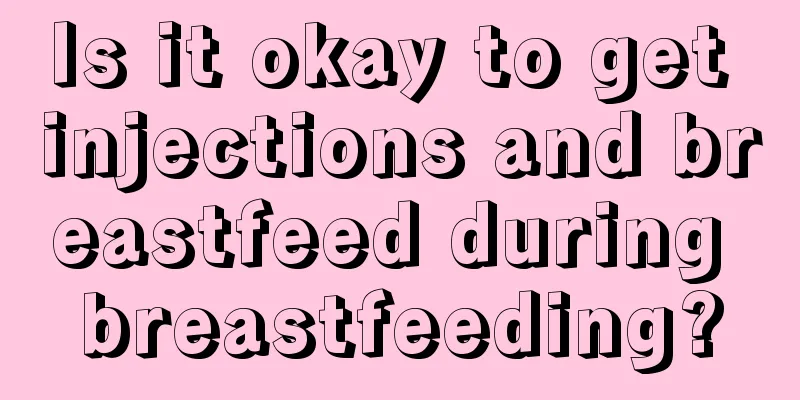Will the placenta come out automatically during childbirth?

|
When a baby comes into this world crying, a new life begins. It carries people's yearning and hope for a better life, and also indicates that a girl becomes a mother. People often marvel at the magic and mystery of the process of nurturing life, but they still have this question: How does the placenta that provides nutrition to the fetus come out? In fact, many people don’t know this question. The editor will help you understand this issue. Generally speaking, after the baby is born, the placenta will slowly peel off from the uterus on its own and no special treatment is required. But there are always some special cases. For some people, the placenta does not detach automatically for various reasons and needs to be removed manually by the midwife. So how do you get it specifically? The entire process of artificial placenta removal is roughly divided into four steps: Step 1: The midwife slowly extends one hand from the birth canal into the uterus to accurately locate the placenta. Step 2: Use your other hand to gently press the mother's belly, then reach into the uterus and slowly peel the placenta off from the edge of the placenta along the wall of the uterus. Step 3: Reinsert your hand into the uterus again to check if there are any fragments of the placenta left. Step 4: Press and caress the pregnant woman's belly to restore the uterus to its original state as much as possible The above is the entire process and steps of manual placenta removal. But this is not for everyone. Most women will experience natural shedding, and only in a few special cases will doctors perform artificial shedding. Common placental abnormalities 1. Placenta previa Normally, the placenta should be attached to the front, back and side walls of the uterus. But in some cases, the placenta is attached to the top of the internal cervix like a small hat, just sitting on the head or buttocks of the fetus. This situation is called placenta previa. According to the location of the placenta previa, it can be divided into three types: complete (or central) placenta previa; partial placenta previa; marginal (or low-lying) placenta previa. 2. Placental abruption The placenta is normally located close to the uterine wall before the fetus is born. If it separates from the uterine wall during this period, it is called placental abruption. Placental abruption and placenta previa are both major causes of bleeding in late pregnancy. Once a dangerous situation occurs, in principle, the fetus should be delivered as quickly as possible. Only when the fetus is delivered can the uterus contract quickly and stop the bleeding. 3. Abnormal placenta During conception, if the fertilized egg implants in the uterine cornu, a double placenta, a kidney-shaped placenta, a horseshoe-shaped placenta, or a deep groove may form on the placenta. If the chorionic villi develop around the fertilized egg, a long and thin placenta will be formed, which is medically called a membranous placenta. If the fertilized egg is implanted in the correct location but there are inflammatory lesions in the uterine mucosa at the implantation site, a secondary placenta will be formed. These placentas of various shapes can easily remain in the uterine cavity during delivery and are one of the important causes of intrapartum and postpartum bleeding and infection. 4. Placenta accreta and placenta accreta Whether it is placenta accreta or placenta accreta, it can make placental separation difficult during delivery and cause heavy bleeding. 5. Placental white infarction Placental white infarction is caused by placental lesions, that is, there is white or yellowish-white nodular degenerative tissue under the amniotic membrane on the fetal side of the placenta, which is relatively hard. If the degeneration is more severe and deeper, the placental function can be damaged, causing the fetus to die in the uterine cavity, and placental abruption is likely to occur. |
<<: Uterine pain like a needle prick
>>: What's in the delivery bag?
Recommend
Can these 6 truths save your sleep?
Do you remember when you first suffered from inso...
Can I take health supplements after abortion?
Nowadays, young people have more open minds, and ...
Vulvar swelling and pain during pregnancy
In the second trimester of pregnancy, pregnant wo...
First week confinement meal recipes
For many women, the first month after giving birt...
What causes breast pain? Don’t worry about these 5 types of pain!
Breasts are not only a physiological symbol of wo...
Can induced labor be performed on a five-month-old fetus?
After having a baby, many female friends have to ...
ChromeOSApps: As of September 9, 2011, the number of Chrome Web Store users reached 30 million
September 11, 2011 was the third birthday of Goog...
Precautions and diet during one month of pregnancy
We all know that many young couples are not very ...
Can fitness help enlarge breasts?
In the gym, you can often see many women doing fi...
Stomach pain in the ninth month of pregnancy
Pregnancy is a very happy thing, because you are ...
Can I have a baby if my menstruation is irregular?
It is natural for women to give birth to children...
Does listening to noise have any effect on pregnancy?
Women will do prenatal education during pregnancy...
What is the progesterone level at 5 weeks of pregnancy?
Progesterone is actually a kind of progestin secr...
How to peel cashews with skin? Why are purple cashews cheaper than ordinary ones?
In daily life, we all know that nuts have high nu...
Why is my uterus hurting?
For friends who feel a little pain in the uterus,...









